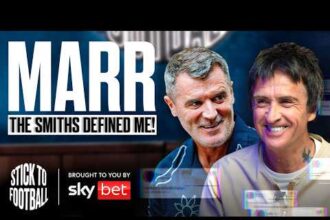It might not be a surprise to you that some soccer players like to buy jewellery. They are some of the highest-paid athletes in the world.
Yet, a niche in the jewellery industry, supplying players with commemorative pieces, is a concept that is a long way from reaching its potential.
Soccer players compete for various pieces of silverware every year. They can achieve individual records, team records, or dramatically escape relegation.
Advertisement
All of these moments can be worthy of celebration. And the notion of commemorative jewellery — namely the championship ring — is creeping into soccer outside of the United States.
Mirroring their contemporaries across the pond, some footballers are commissioning the creation of celebratory rings to mark their biggest achievements, heralding the beginning of a jewellery-based cultural shift.
So how has the championship ring begun to be embraced in European soccer? Why are footballers paying for them? And who is making them?
Championship rings are a custom in every major American sports league: the NBA and WNBA (basketball), the NFL (American football), MLB (baseball), and the NHL (ice hockey). College sports, the most common development route taken for professional athletes in the United States, also present them, as does U.S. soccer in MLS and NWSL.
Celebratory rings have become a tradition within these sports, having first been ordered by the Montreal Hockey Club, the inaugural winners of ice hockey’s Stanley Cup in 1893, and have been consistently used from 1931 onwards for major championship winners. Previously, pocket watches, lapel pins, and watch fobs have all been used to mark memorable triumphs.
The Los Angeles Dodgers’ Evan Phillips, left, and Alex Vesia received their 2024 World Series championship rings last month (Harry How/Getty Images)
Developments in design transformed championship rings over time. A club logo first appeared as the central design on the top of a bezel in 1973, given to the Oakland A’s, and the 1977 New York Yankees kicked off a “bling” era with arrangements that used an unprecedented 19 diamonds that adorned their iconic ‘NY’ logo.
In the U.S., rings are funded by the winning teams and can be financially supported by the league. They are then typically presented in the following season.
Budgets for rings are rarely made public, but they can become priceless for the players receiving them. The Baseball Hall of Fame website says that MLB contributes $1,500 towards a ring for each player, coach, manager and general manager.
Advertisement
It’s also not uncommon for championship rings to be auctioned off for charity, or if an athlete experiences financial hardship. One sold for almost $400,000 (£309,887/€361,574) when NBA legend Kareem Abdul-Jabbar auctioned six rings and other sports memorabilia in 2019, with the majority of the proceeds going to his Skyhook Foundation charity.
Jason Arasheben is the chief executive of Jason of Beverly Hills, the creators of championship rings for the Los Angeles Lakers, Los Angeles Rams and Boston Celtics, among others.
“The rings are a testament to achieving the pinnacle of sports: a championship,” Arasheben tells The Athletic.
“Typically, they are worn during the ceremony and not worn much till after the players retire and want to reminisce.”
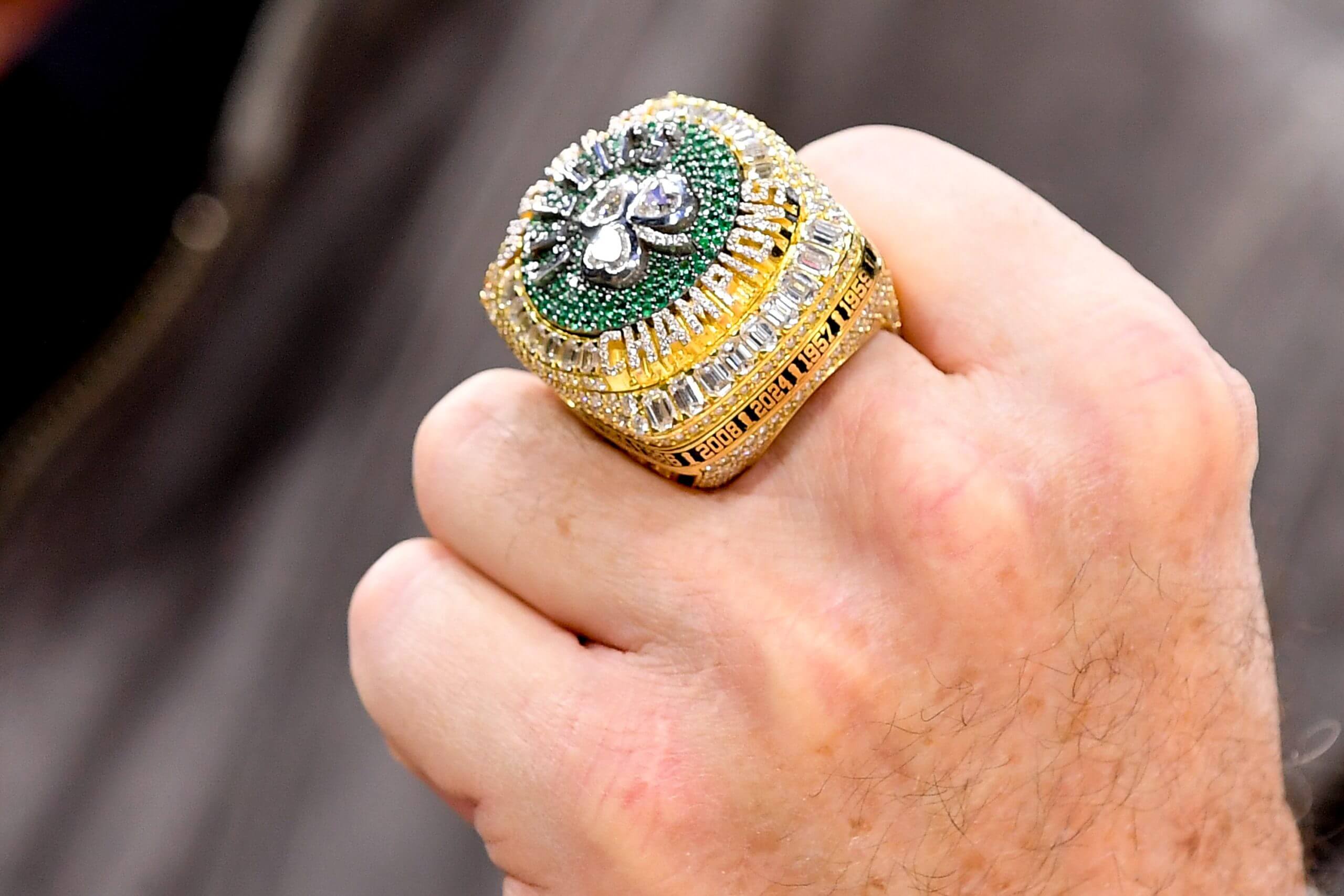
A close-up look at current Boston Celtics majority owner Wyc Grousbeck’s 2023-24 NBA championship ring (Allen Berezovsky/Getty Images)
Championship rings made by Jason of Beverly Hills typically use white gold and diamonds, mixing in the primary and secondary colours of a team through rubies and other semi-precious stones.
Thousands of hours go into their crafting, with research and development taking longer than production, and contributions made by the designer, caster, jeweller, diamond-setter and polisher.
As well as making championship rings for teams across the NFL, NBA, WNBA, MLS and NHL, Jason of Beverly Hills have also made bespoke rings in soccer.
Didier Drogba approached the company wanting rings to mark Chelsea’s 2011-2012 UEFA Champions League triumph, which the now-retired striker organised and paid for. A second commission came from Atletico Madrid after they won the 2017-2018 UEFA Europa League.
“It is a cultural thing that, as the world becomes a smaller place, you see increased demand,” says Arasheben. “Players want to see a testament to their accomplishments and a ring is much more practical than a medal. We are seeing a massive shift toward championship rings as other countries adopt the tradition.”
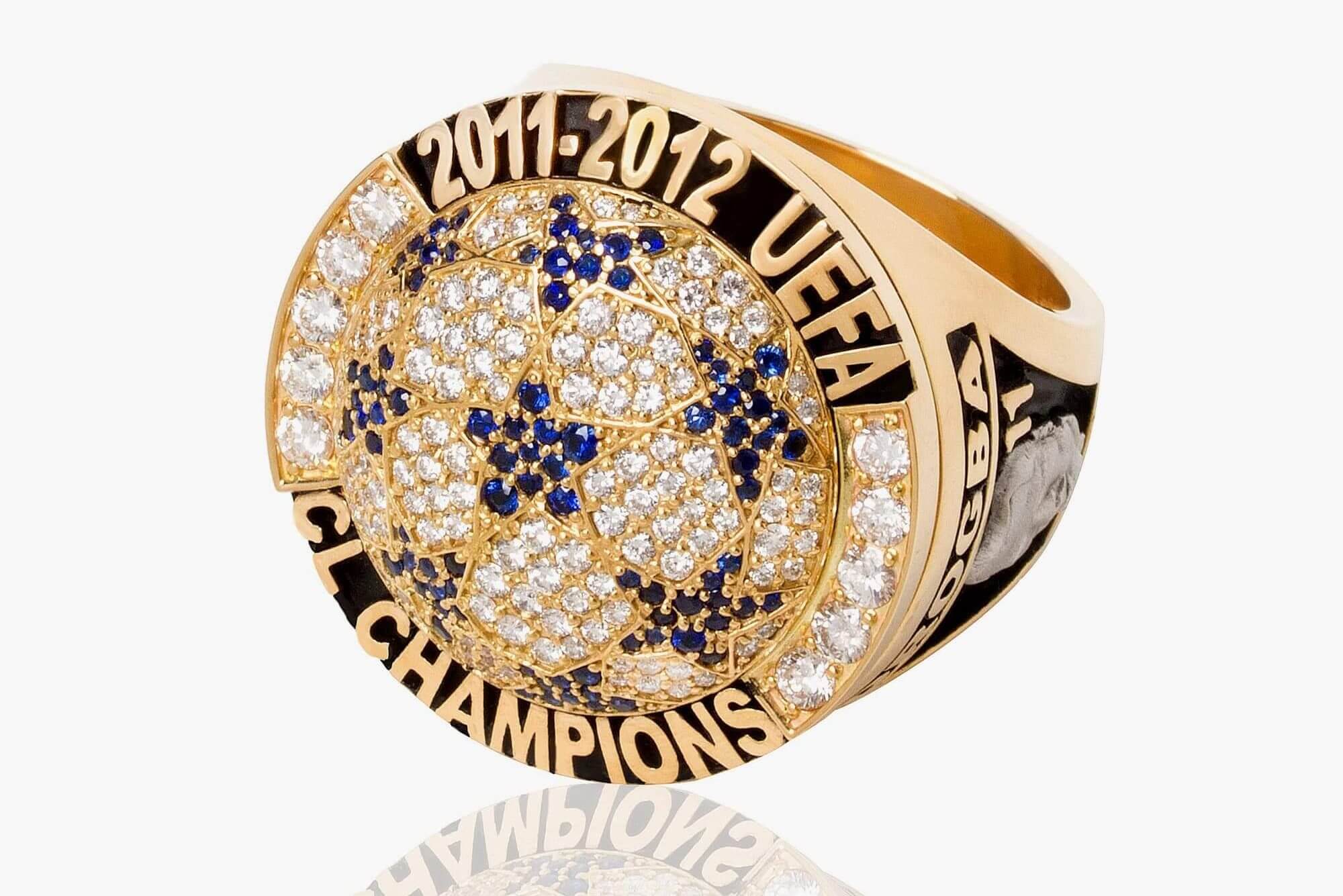
Drogba’s 2011-2012 Champions League ring (Jason of Beverly Hills)
Leading the shift in England is MJ Jones. The London-based jewellery brand has worked with a long list of sports stars from Lionel Messi to Baltimore Ravens quarterback Lamar Jackson.
Founded in 2012, they are ahead of the curve on commemorative jewellery and are sought out for their custom designs.
Advertisement
“Ninety-five per cent of our jewellery helps celebrate an occasion or to celebrate success, whether it be on or off the field,” CEO and Founder Matthew J. Jones tells The Athletic.
“Especially for our clients, whether they had a newborn baby or whether they’ve won the World Cup, or whether they win the league or something significant in their lives. A lot of these clients will come to us because they want to create some item of joy to celebrate that, but it’s still got to look great and be fashionable.”
MJ Jones’ custom products have ranged from £2,000 to tens of thousands of pounds in price. Among those to signify their achievements and careers in championship ring form have been Inter Miami’s Luis Suarez and Barcelona’s Raphinha, with whom Jones formed a relationship while he was at Leeds United.
“Fine jewellery is very precious but you can wear it every day,” Jones says. “But when it comes to creating something that you can have in your trophy cabinet, you can’t wear a giant trophy, but jewellery is a wearable work of art. It is something they can pass down to their kids that’s had their input, and it also is something that’s made out of the finest materials, so it allows them to have something that will last forever and that’s a symbol of their success.”
Though in Europe, the jewellery is a bit more modest. “You always kind of see that we’re probably not as outgoing, especially with the style,” Jones says. “They wear much bigger diamond-set jewellery and everything in America, whereas, especially in Europe and the U.K., we’re a little bit more toned down, I’d say. But it’s just a different style.”
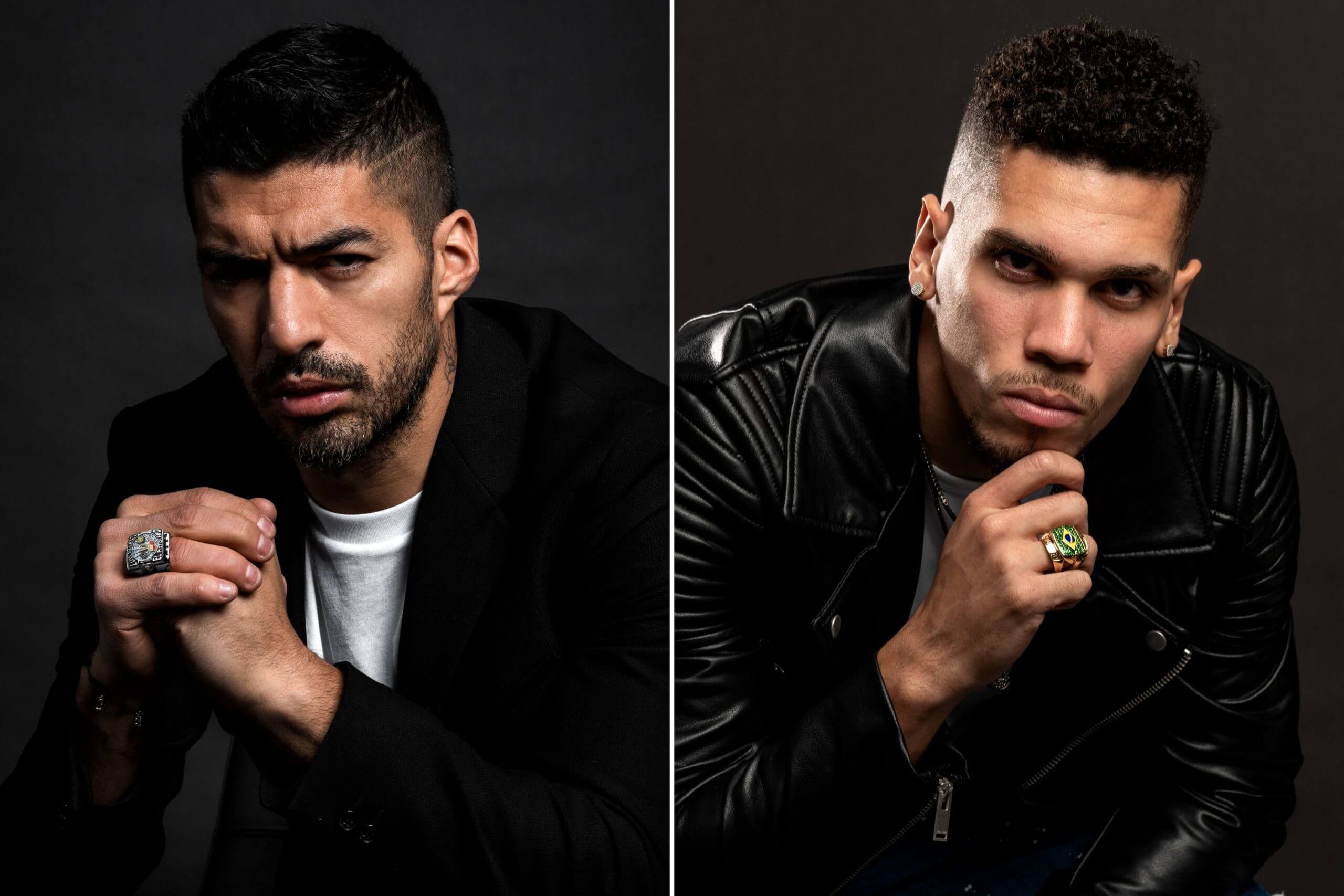
Inter Miami’s Luis Suarez and former Bayer Leverkusen midfielder Paulinho, right, pose with bespoke rings (MJ Jones)
Other footballers to have paid for their own championship rings include Jeremie Frimpong, who gifted his Bayer Leverkusen team-mates rings following their 2023-2024 Bundesliga triumph, and the Inter trio of Marko Arnautovic, Marcus Thuram, and Hakan Calhanoglu, who bought rings for their team to celebrate winning the Scudetto that same season.
Fans can also get their hands on much less expensive versions. In collaboration with Italian jewellery brand Nove25, Inter are selling commemorative rings celebrating the team’s 2023-2024 Serie A triumph for €178 (£153; $202).
Athletes purchasing championship rings feels like a natural part of American culture being embraced on the other side of the Atlantic.
Advertisement
In an increasingly globalised world, it is common for cultures to intertwine, particularly when it comes to fashion. But how has the influence of American sports spread so far and wide?
Daniel-Yaw Miller, author of the SportsVerse Substack and brand advisor, says: “American sports culture is essentially showbiz and it’s an entertainment product as much as it is a sporting product.
“There are examples, like the Super Bowl, where sometimes you can say that the action takes second place to the half-time show and whatever commercials are running throughout the game.”
Here’s Jeremie Frimpong modelling the ring he bought for all his teammates to celebrate Leverkusen’s Bundesliga title. pic.twitter.com/mBsxARl6UI
— Seb Stafford-Bloor (@SebSB) May 20, 2024
This might go some way to explaining why your friend who doesn’t like sports might still wear a Yankees cap and why footballers outside of the U.S. admire championship rings. They are part of the show.
And that’s not to mention that many of these athletes are friendly and openly welcomed by American sports franchises and vice versa.
Medals have been the individual award norm for finalists and champions throughout soccer history, but football organisations are starting to soften to American sports innovations.
FIFA announced in September that they will adopt a Super Bowl-style half-time show for the 2026 World Cup final, with the tournament to be held in the United States, Canada and Mexico. It will be the first of its kind, with the 2026 final at MetLife Stadium in New Jersey.
“European football is now aware of the cultural benefits of the way U.S. sports are set up and I think they’re slowly starting to see the benefits of modernising,” Miller says. “So I see no reason why, in a few years, they won’t want to have things like championship rings to boost the cultural cache of these competitions.”
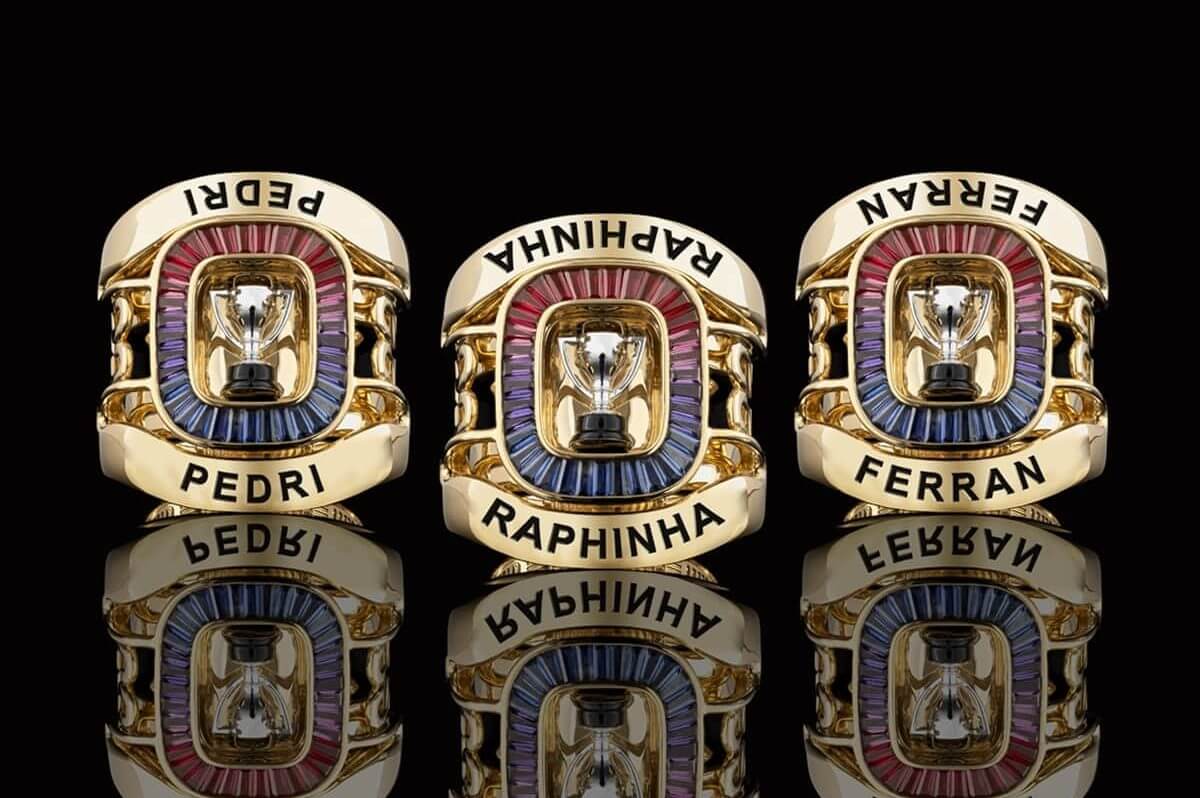
Rings created for Barcelona’s Pedri, Raphinha and Ferran Torres (MJ Jones)
As cultural crossovers continue to happen and athletes, more invested in fashion than ever before, covet personalised jewellery to celebrate landmarks, perhaps the championship ring could become as treasured and prestigious as a winner’s medal. And jewellers such as MJ Jones only stand to benefit.
“We would love to, in the future, work on some of these projects alongside the leagues because it’s what clients want,” says Jones. “We’re definitely slowly starting to catch up but, it takes a little bit more time in Europe and the U.K.”
Advertisement
Miller says: “We’ll probably see a lot more jewellery brands, slowly down the line, waking up to the fact that sports stars are not just people who buy flashy chains and all of that — they’re actually looking for meaningful purchases and items that they can buy that signify important moments in their career.”
(Top photos: MJ Jones and Jason of Beverly Hills; design: Eamonn Dalton)





